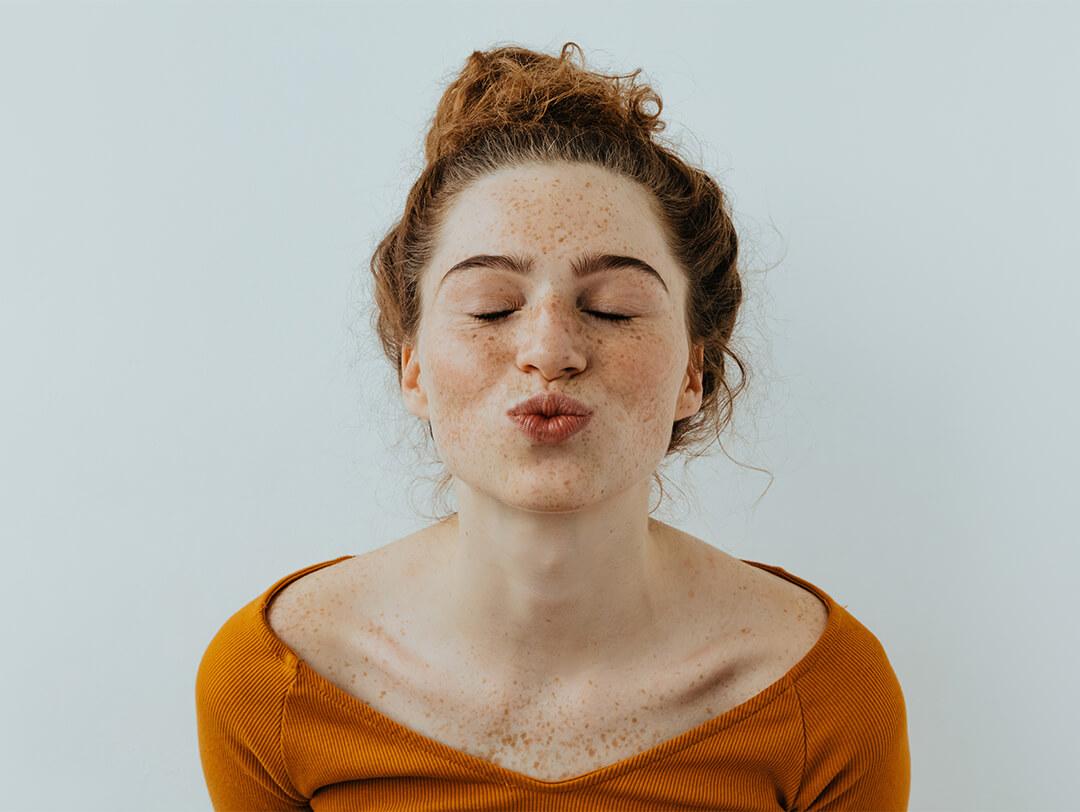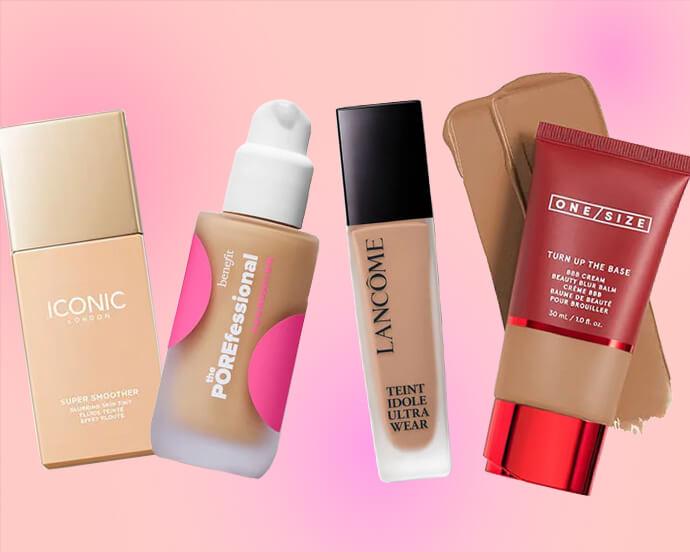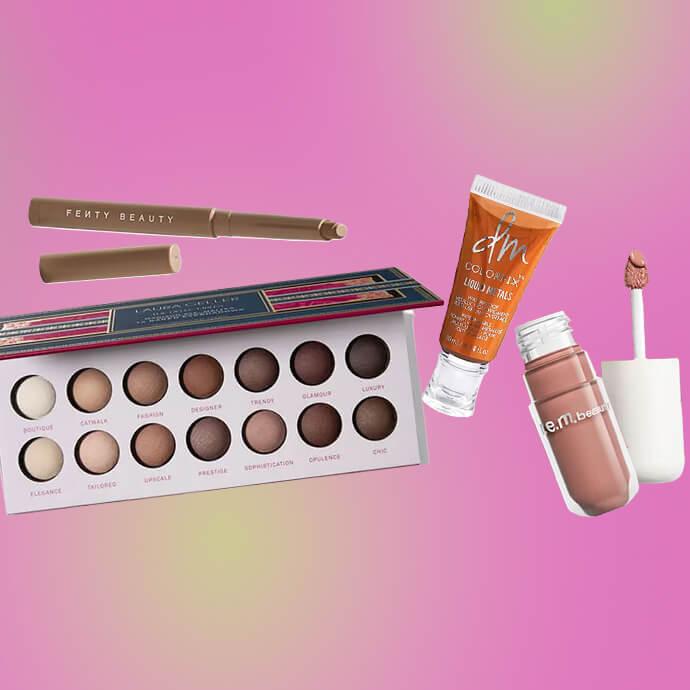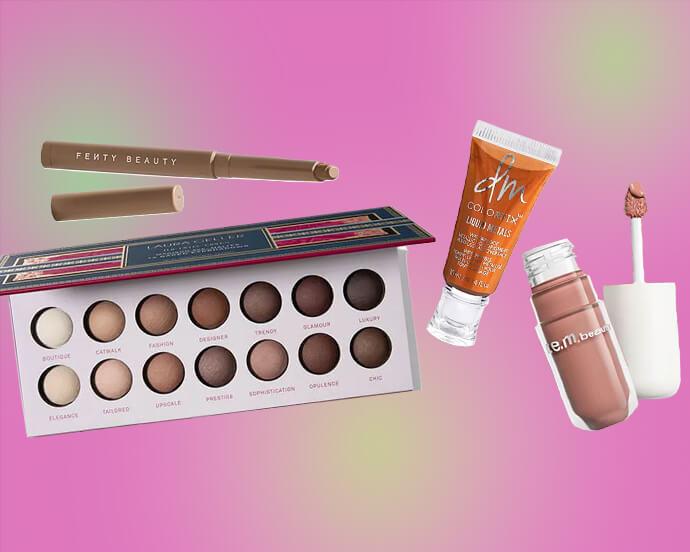What are Henna Freckles? Everything You Need to Know about the Viral Beauty Trend



Cortney Clift


Whether you love them or hate them, faux freckles have officially made a name for themselves in the beauty world. While some beauty lovers have been crafting fake freckles using products like eyebrow pencils for a while now, the newest version of the trend involves using henna. After beauty influencers like Naomi Jon began sharing YouTube tutorials about how to create realistic-looking freckles using henna, freckle fans everywhere were hooked. But before you hop aboard the henna freckle trend, it's extremely important to understand which type of henna is safe to use on the skin.
Below, we're sharing what the biggest benefits are of using henna to create faux freckles, what type of henna you should look for, and a quick tutorial on how to try out the trend at home.


It's about glam time you treated yourself.
MEET THE EXPERT
Zoiya Wahidi is a henna artist and the founder of Henna Studio in Chicago.
Alberto Olivares is the COO at the natural henna brand Mihenna.
Why should I use henna for faux freckles?
1. It's natural.
Henna is a flowering plant with leaves that contain a unique, naturally occurring chemical compound called lawsone, a permanent orange-red pigment. It has been used as hair dye and to create body art and henna tattoos for thousands of years.
2. It doesn’t damage your skin the way the sun does.
When using the right type of henna paste (more on that below), this natural alternative can create the illusion of sunkissed, freckled skin without the harmful side effects of spending too much time in the sun.
3. It adjusts to your unique skin tone.
Henna dye actually creates a translucent stain on the skin, which means it adjusts to your unique skin tone to create more realistic-looking results than some other faux freckle products you’ve seen on the market.
4. It's long-lasting but still temporary.
While henna is a permanent dye, it only has a semi-permanent effect on the skin because it fades as your skin exfoliates. You can generally expect henna's color to be in its prime about two to three days after you apply it. All traces should be gone after two to three weeks (aftercare depending).
Is using henna on your face safe?
"Natural henna is the only kind of henna that is safe to use on skin," says Zoiya Wahidi, a henna artist and the founder of Henna Studio. "There are many kinds of henna such as red henna and black henna—both of which are extremely harmful to use on skin. They contain chemicals such as p-phenylenediamine (PPD) which can severely burn the skin and leave life-long burn marks."
Alberto Olivares, the chief operations officer at Mihenna, says it's a good idea to look for a henna paste that's not only natural, but 100% USDA organic as well. Additionally, for the most ingredient transparency, you should always look for henna that comes from companies that make their own natural henna.
"At Mihenna, we mix our henna in-house so that we know exactly what is going into our product and on our customer's face. We even have our henna powder lab-tested for pesticides, herbicides, and metals, to make sure the henna leaves used in our paste have no harmful chemicals or trace minerals."
Wahidi says the only ingredients you should see listed in a henna cone are henna powder, essential oil, sugar, and water. "Scented cones such as lavender, tea tree, and eucalyptus all stain the same, they just smell different," she says. "However, lavender henna cones are the safest to use on children and pregnant women."
If you've never used henna before or if you have sensitive skin, Olivares recommends patch testing the henna paste on your arm at first. This will help to ensure that you don't have any adverse effects to henna, which could be amplified when applied to the face.
How to Create Henna Freckles
To create DIY henna freckles, you'll need a natural henna cone and coconut oil. Both Henna Studio and Mihenna also sell henna freckle kits, which come with natural henna cones, detailed instructions, and everything you need to get started. See their kits here and here.
1. Prepare your skin and your henna cone.
For the best results, exfoliate your skin one to two days before applying the henna. On the day you apply it, keep your skin clean and free of oils, lotions, or thick creams as these can interfere with how well the henna will stain.
Once you've found a natural henna cone that's safe for the skin, you'll want to carefully snip off a very tiny bit of the tip of the cone, similar to how you might snip off the tip of a piping bag when baking. If you’re just starting out with henna freckles, be super conservative with how much you snip off, as you'll need a very fine tip to create natural-looking freckles.
2. Apply the henna paste to the skin.
"For the best faux-freckles result, start with a clean, makeup-free face," says Wahidi. As you gently squeeze the tube, "make uneven dots across the bridge of the nose and cheeks for a natural look," she says. Continue adding "freckles" until you've achieved your desired look.
3. Allow the natural henna paste to sit on the skin.
"It is important to keep the paste on for at least three hours," says Wahidi. "The longer the paste is on, the better the results will be," At Mihenna, Olivares says they typically recommend applying the henna freckles to your face about two hours before going to bed and sleeping with the henna paste on overnight.
Organic henna paste is safe to keep on your skin for up to 12 hours. For the most realistic-looking results, you might also try removing the henna paste at different times to make some freckles lighter and some darker.
4. Carefully remove the henna paste without water.
The next morning (or after a few hours), gently remove the dried henna paste from your face. "It should be picked off using your fingers," Wahidi says. "It is extremely important to not use water to remove the paste as water will lighten the results. "You should avoid contact with water, makeup, and face moisturizer for 24 hours after paste removal," she says.
5. Follow proper aftercare protocols for long-lasting henna freckles.
In addition to steering clear of water and water-based products for 24 hours, Olivares suggests applying a layer of coconut oil over wherever you've applied the henna before showering. "Adding coconut oil helps to create a barrier so that water does not touch the skin and fade the results." Avoiding any exfoliating products (physical or chemical) will also help the henna to last longer.
When using natural henna, Wahidi warns that the stain may look quite orange at first, but she says if you follow the proper aftercare protocol, the henna's color should transform into a dark burgundy-brown shade within 12 to 24 hours.
Want in on all the IPSY Glam Bag fun? Take our Beauty Quiz now to get started. Already an Ipster? Refer your friends to earn points, which you can use toward products. Either way, don’t forget to check us out on Instagram and Twitter @IPSY.
Like this article? Share it with your friends by clicking the icons below!
Liked this post? Share!
Related Stories


Makeup
Want an IRL Filter? These Are the Best Blurring Foundations
Published on Dec 12, 2025 • 5 min read


Makeup
How to Expertly Apply Eyeshadow on Mature Skin
Published on Dec 10, 2025 • 6 min read


Makeup
How to Use Bronzer and Contour to Sculpt Your Face Like a Pro
Published on Dec 5, 2025 • 9 min read


Makeup
Makeup for Older Women That Works With Your Skin, Not Against It
Published on Dec 1, 2025 • 12 min read


Makeup
2026’s Biggest Makeup Trends Are a Maximalist Dream
Published on Dec 1, 2025 • 8 min read


Makeup
2025’s Biggest Makeup Trends: Go Big or Go Home
Published on Dec 13, 2024 • 7 min read


Makeup
16 New Year’s Eve Makeup Ideas to Fashionably Ring in 2026
Published on Nov 25, 2025 • 10 min read


Makeup
Your 2026 Beauty Horoscope Is Here—and the Stars Are Serving Looks
Published on Nov 25, 2025 • 9 min read


Beauty Picked Just for You
Get 5 products worth up to $70
Plus exclusive access to epic deals up to 80% off
Starting at just $14/month. Cancel anytime.